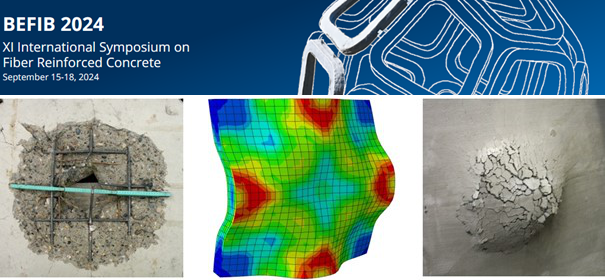Events Overview BEFIB 2024 – GRK 2250 Special Session on “Dynamic and Impact Behavior of fiber reinforced concrete”
BEFIB 2024 – GRK 2250 Special Session on “Dynamic and Impact Behavior of fiber reinforced concrete”
-
15. - 18.09.2024
-
Dresden, Germany
As part of the prestigious XI International Symposium on Fiber Reinforced Concrete (BEFIB 2024) in Dresden, Germany, a special session was held, bringing together the community on fiber reinforced composites and structural materials under dynamic and impact loading.
This special session, with research groups from around the world, aimed to explore recent advances, challenges, and practical applications in the field. Each speaker shared insights from their recent research, highlighting both innovative approaches and significant challenges, including an overview of the latest advances from the team of the GRK 2250.
Dr. Cesare Signorini from TU Dresden opened the session moderated by Prof. Ezio Cadoni and Dr. Petr Máca. He introduced the vision of the DFG Research Training Group – GRK 2250 and presented some recent research on the material design of the mineral-bonded fiber-reinforced composites used for the protection of structural elements against impact and blast loading, showing some interesting application scenarios.
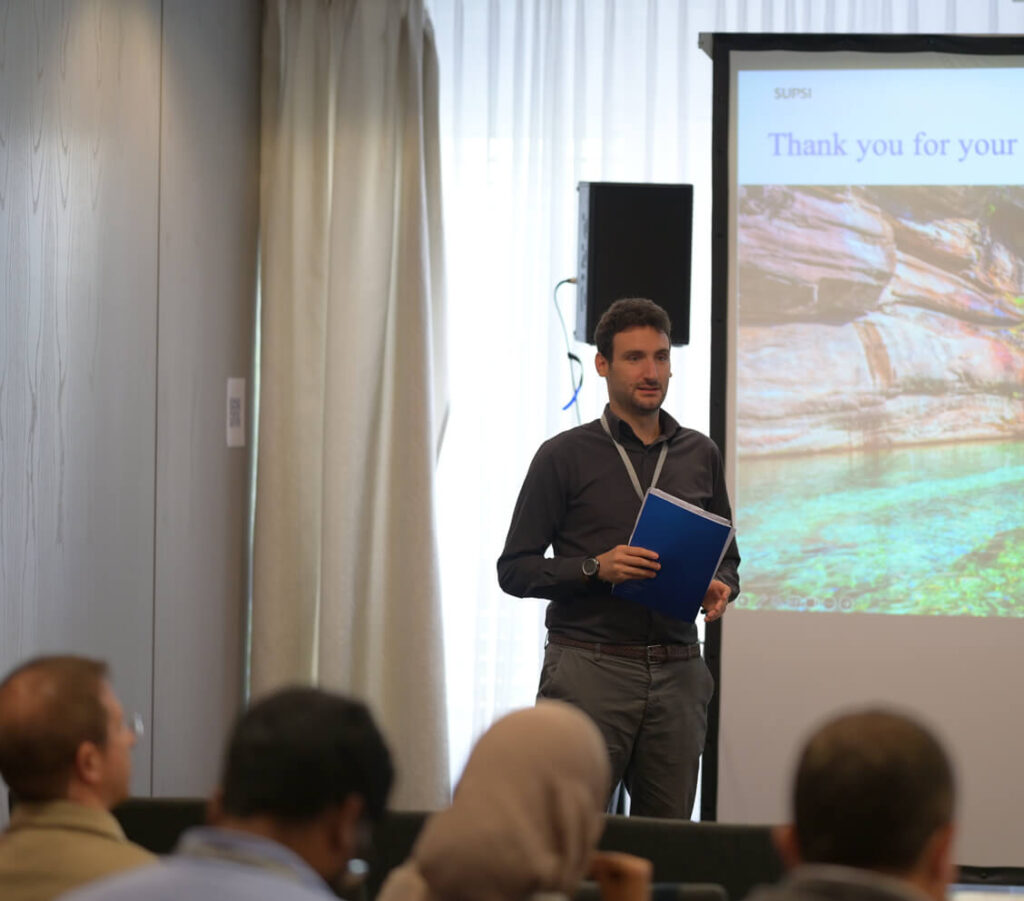
The following presentation was given by Mr. Felipe Rodrigues de Souza, Pontifícia Universidade Católica of Rio de Janeiro, who described the effectiveness of adding an additional layer of strain-hardening cementitious composites (SHCC) to SFRC beams under impact loading.
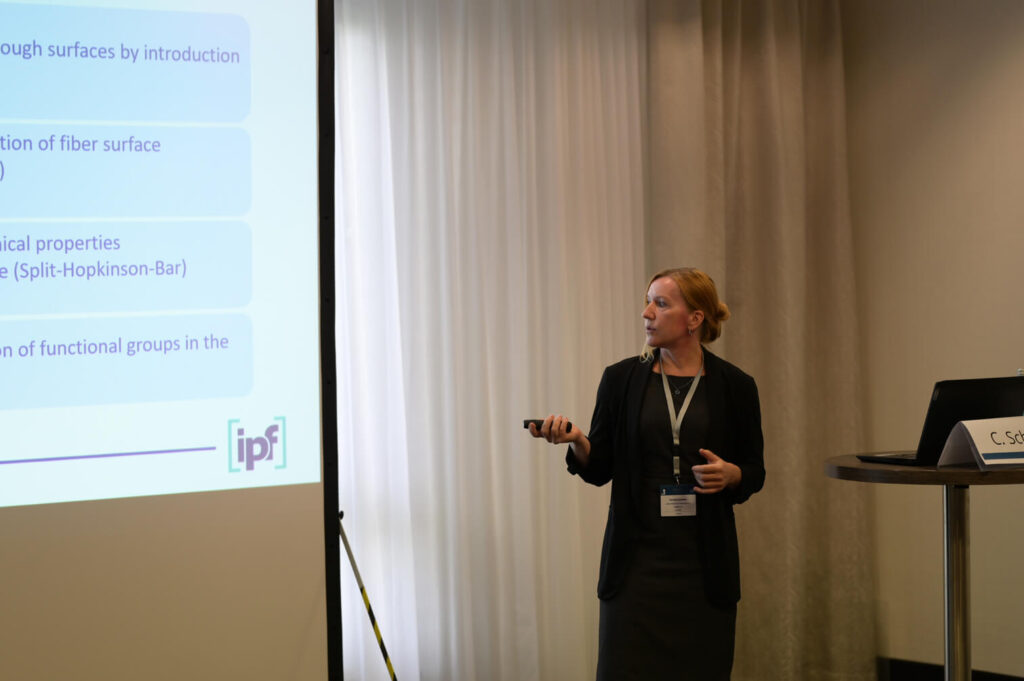
The third presentation was given by Prof. Christina Scheffler, the Leibniz Institute for Polymer Research in Dresden, who moved to the micro scale and presented a collaborative work in the framework of the Research Training Group on fiber reinforced concrete by focusing on the impact behavior of a low-clinker LC3 matrix with novel, more sustainable and cost-effective polypropylene fibers.
The fourth presentation, by Ms. Nela Krčmářová, Czech Technical University in Prague, showed her latest research on the investigation of ultra-high performance concrete reinforced with steel fibers under dynamic flexural loading using in-situ X-ray radiography.
The final presentation of the first part of the session was given by Dr. Lena Leicht from our group at the TU Dresden, who presented a part of her PhD work on different potential materials as damping layers to absorb impact energy in concrete structures, in high-contrast protective structures.
The second part of the session moderated by Dr. Cesare Signorini and Ms. Ghazaleh Taheri was opened with the presentation of Prof. Ezio Cadoni of University of Applied Sciences and Arts of Southern Switzerland (SUPSI). He presented an investigation on layered sandwich systems of UHPFRC and reinforced concrete slabs, using a range of high-strain loadings in tensile, compression, and shear tests.
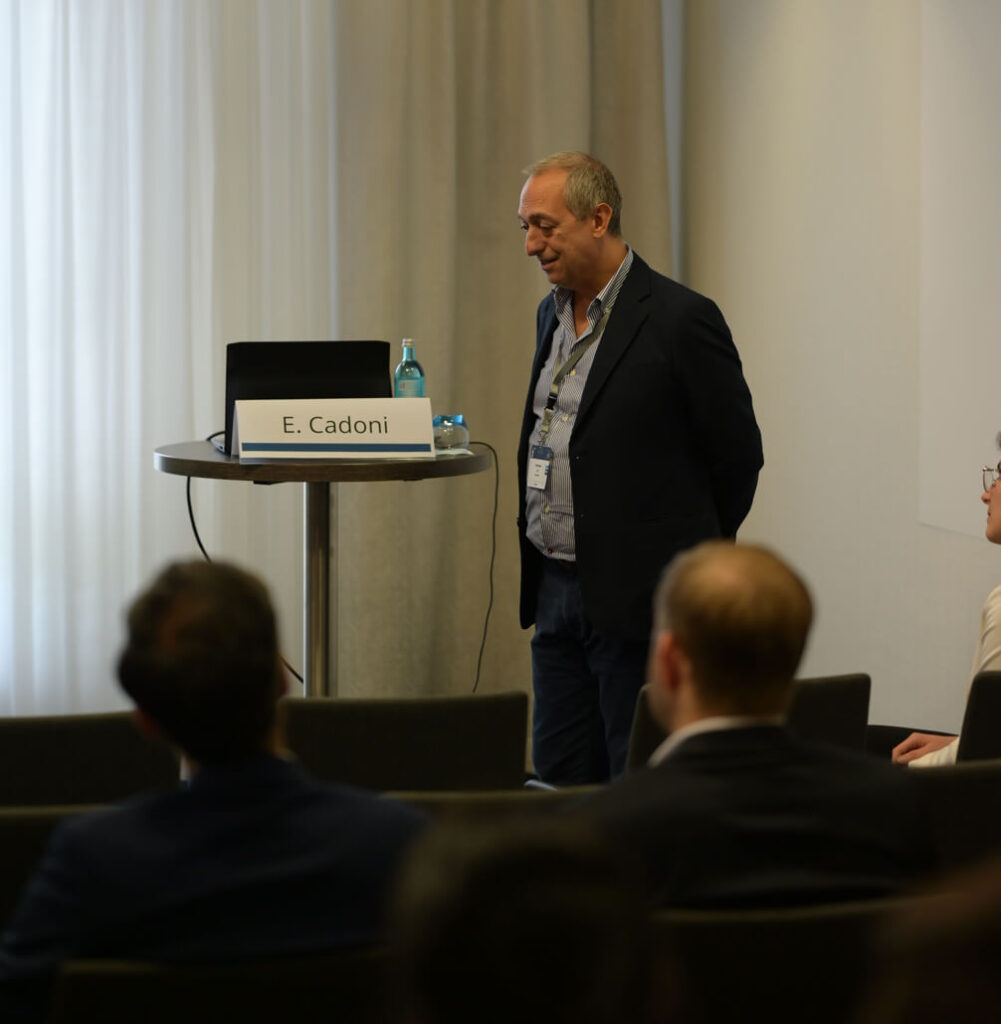
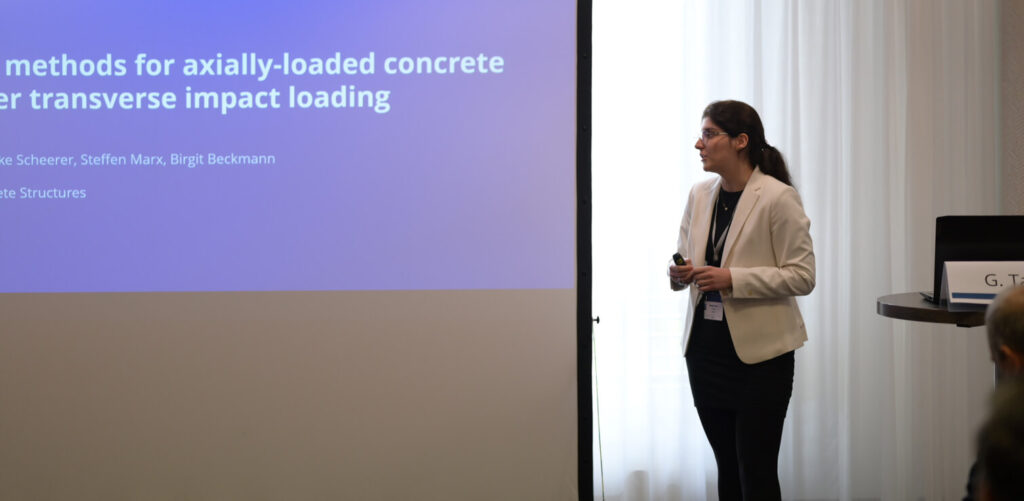
Ms. Ghazaleh Taheri of TU Dresden then presented a comprehensive literature review on the strengthening of RC columns against impact loading, focusing on different methods such as the use of fiber-reinforced polymer (FRP) and fiber-reinforced composite (FRC) layers.
As the third presentation after the break, Prof. Carlos Zanuy, Universidad Politécnica de Madrid, presented interesting results based on their experiments on the residual load-carrying capacity and failure modes of fiber-reinforced concrete (FRC) beams after impact damage using drop-weight impacts followed by quasi-static loading.
The session continued with a presentation by Mr. Vahan Zohrabyan, University of the Bundeswehr Munich, on the effectiveness of steel fibers in reinforced fiber concrete slabs against contact detonation, using 3D scanning to determine missing crater geometry, damage area, flaking depth, volume and weight of flakes.
The session concluded with Mr. Nicholas Unger of the TU Dresden, presenting their latest research regarding experiments and developing CEB-based engineering model for RC slabs strengthened with textile-reinforced concrete (TRC) on the impact rear side, examining both global bending and local punching effects under impact loading.
In summary, this session provided a comprehensive overview of recent research and developments in the field of dynamic and impact behavior of fiber-reinforced concrete, highlighting the importance of innovative materials and techniques in improving the resilience of concrete structures under extreme loads.
Explore Dynamic and Impact Behavior Sessions
As part of the prestigious XI International Symposium on Fibre Reinforced Concrete (BEFIB 2024) in Dresden, Germany, a special session on “Dynamic and Impact Behavior” of fibre reinforced concrete will be held.
The special session is scheduled on Tuesday 17 September from 9:00 to 12:30 and will present the latest research on the behaviour of fibre reinforced composites and structural materials under dynamic and impact loading. This session will bring together the latest advances from GRK 2250 with research groups from around the world and will cover a range of topics from experimental and modelling studies on impact resistance to the design and application of innovative materials for structural protection against extreme events.


